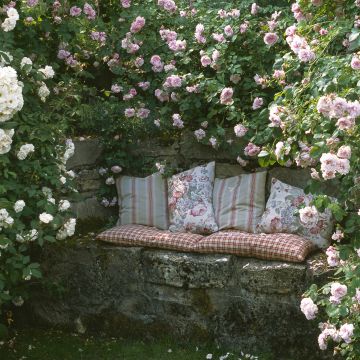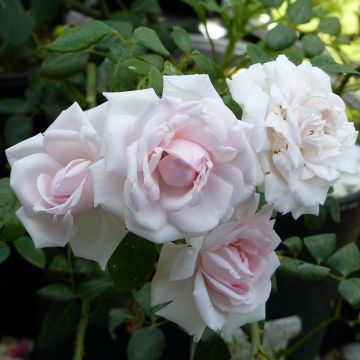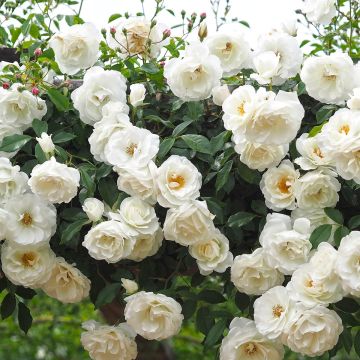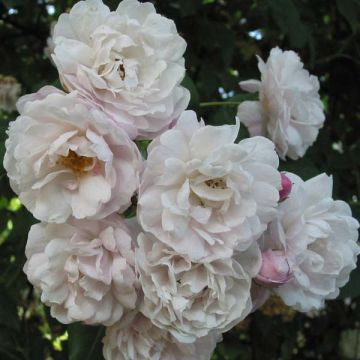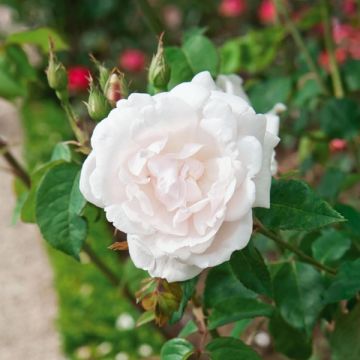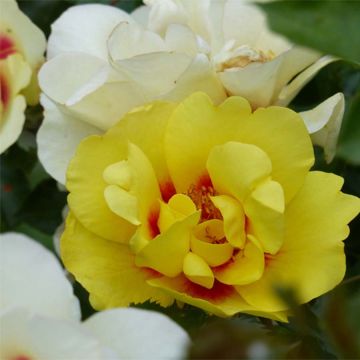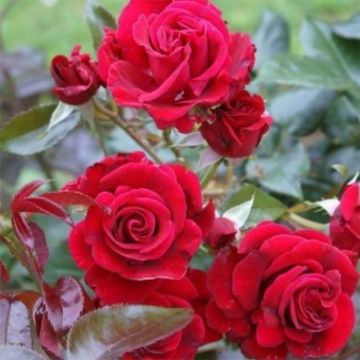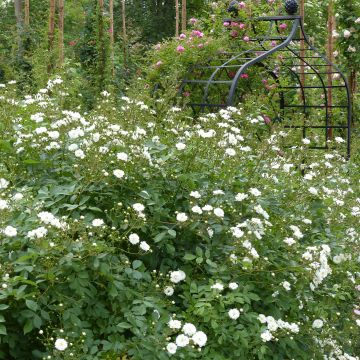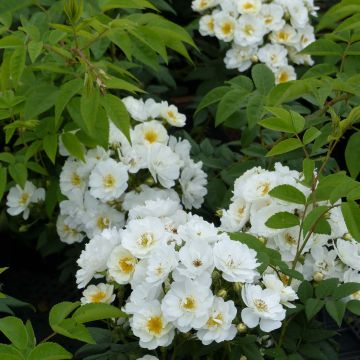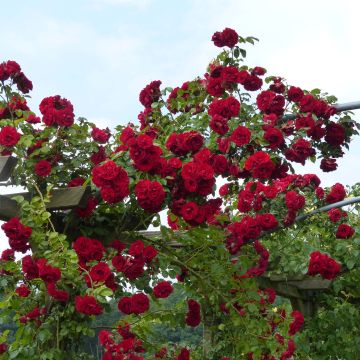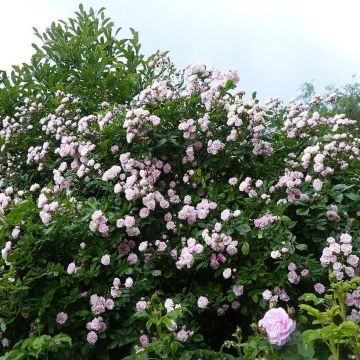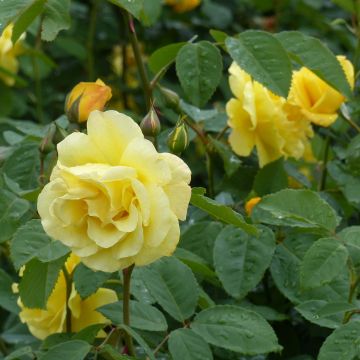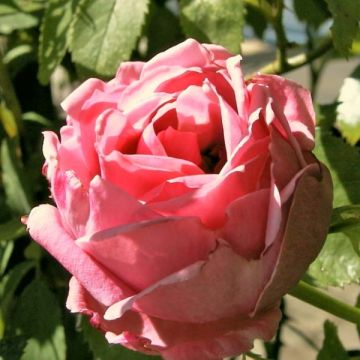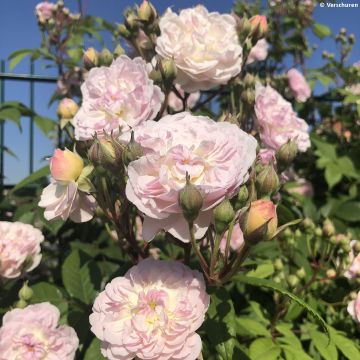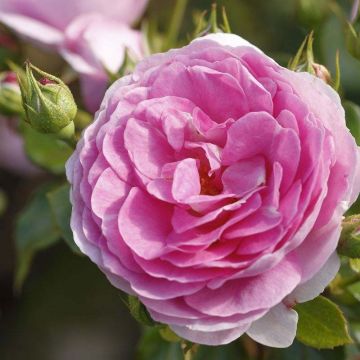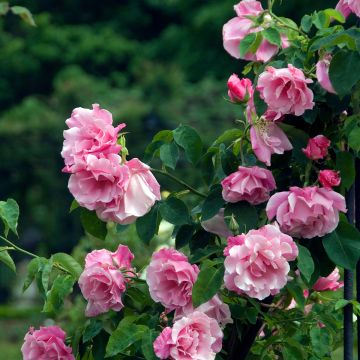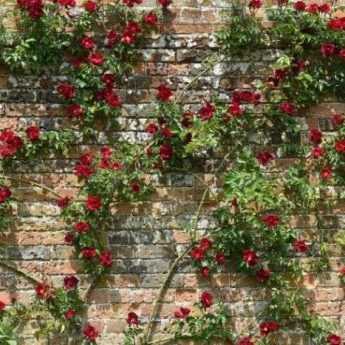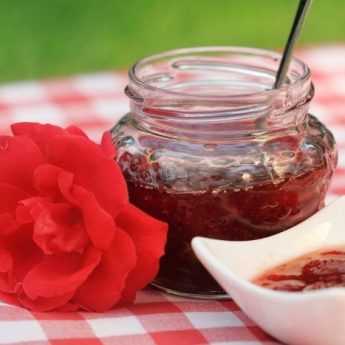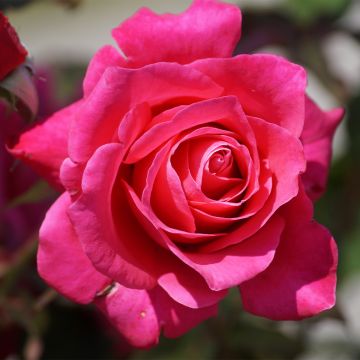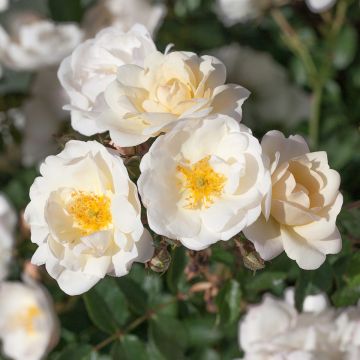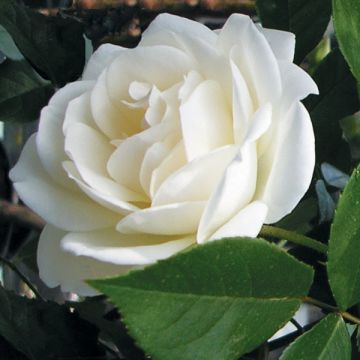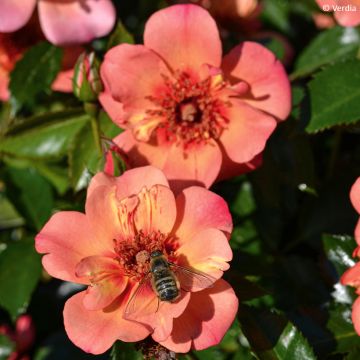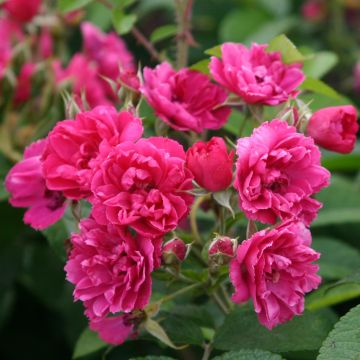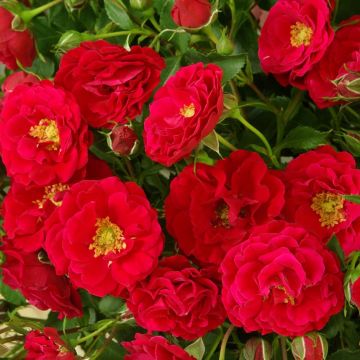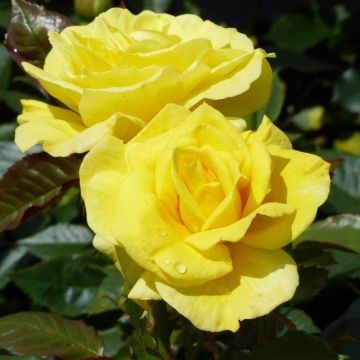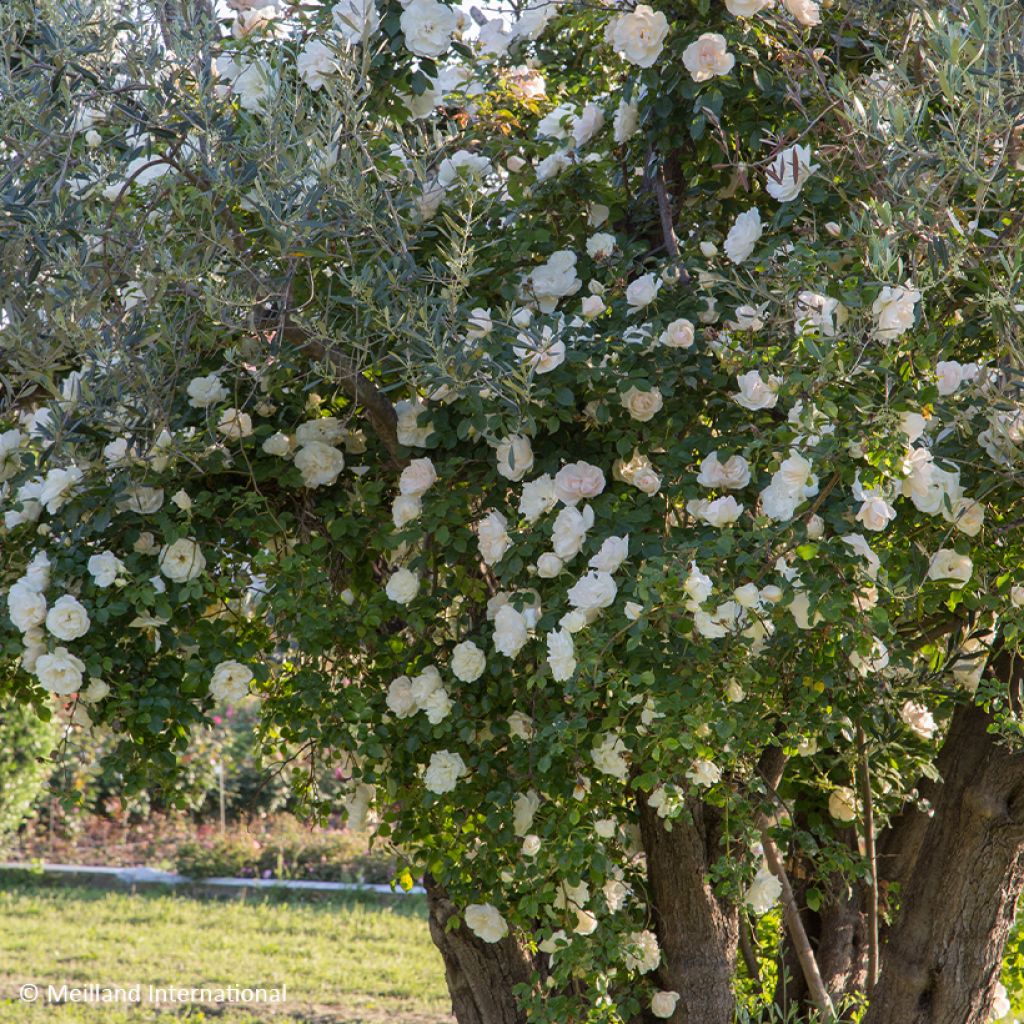

Rosier grimpant liane Jean Honoré Mus
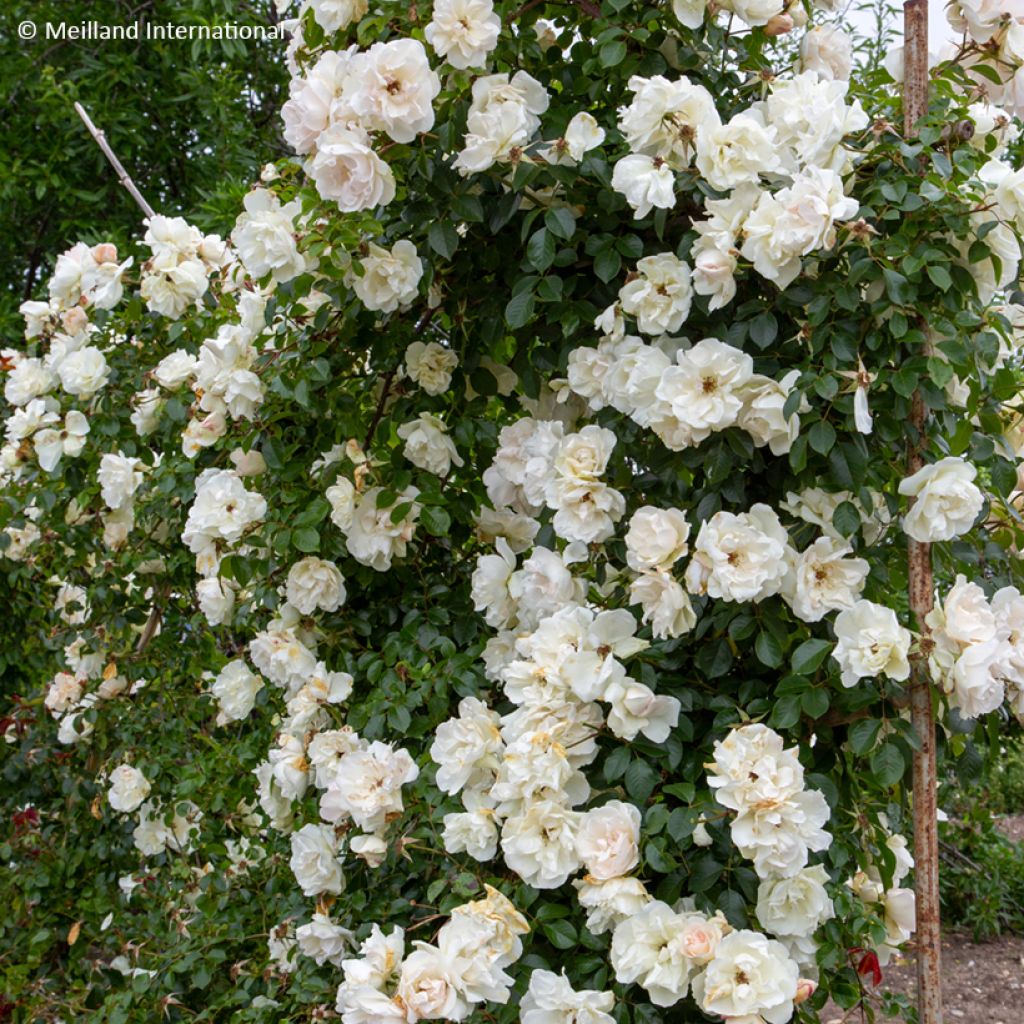

Rosier grimpant liane Jean Honoré Mus
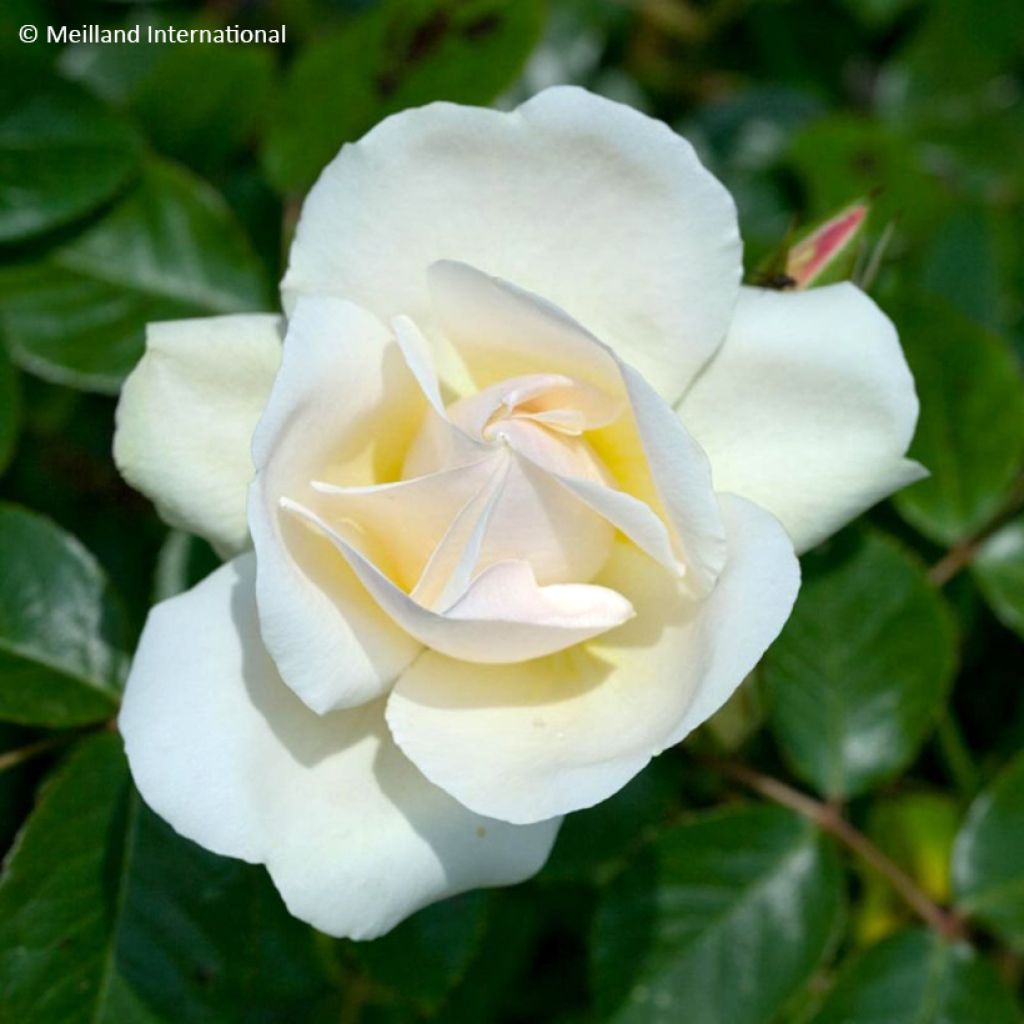

Rosier grimpant liane Jean Honoré Mus
Rosier grimpant liane Jean Honoré Mus
Rosa 'Meibeljenb' LOOPING® JEAN HONORE MUS®
Rosier liane Jean Mus, Rosier liane Looping, Rosier grimpant Jean Honore Mus
Why not try an alternative variety in stock?
View all →This plant carries a 6 months recovery warranty
More information
We guarantee the quality of our plants for a full growing cycle, and will replace at our expense any plant that fails to recover under normal climatic and planting conditions.

Would this plant suit my garden?
Set up your Plantfit profile →
Description
The Jean Honoré Mus rose is an abundant, large rose that can easily exceed 5m in height. With its long, flexible stems, abundant flowering, and dense foliage, it can adorn pergolas, arches, and walls, adding a very romantic touch to the garden. Its large, delicately scented, creamy-white flowers create a magnificent display in spring and autumn. This is a robust, vigorous, continuously flowering, and easy-to-grow liana rose.
The Jean Honoré Mus® 'Meibeljenb' liana rose was developed by Maison Meilland in 2013 and named in May 2022 in honour of the renowned garden designer Jean Mus, a celebrated master gardener known for his naturalistic creations and preference for plants suited to their medium. This rose belongs to the liana rose group characterised by exceptional vigour and the ability to cover large areas. It is also known by the synonyms Looping® and Perle Crescendo®.
This rose has a climbing habit and flexible growth capable of reaching a height of 5 to 7m or even more, with a spread of 3.5m and beyond. Its long, flexible, thorny stems enable it to cling easily to supports such as pergolas, trees, or walls. grouped in clusters of 2 to 5, the semi-double flowers measure around 12cm in diameter and feature 25 to 30 slightly ruffled petals. These flat-corolla flowers reveal a golden-yellow stamen centre at full bloom, attracting bees and other pollinators. Their creamy-white colour is tinged with ivory and pink depending on climate conditions. Their fragrance is light. The Jean Honoré Mus liana rose offers early and prolonged flowering from May-June, lasting 4 to 6 weeks, followed by occasional reblooming in summer. The reflowering in October-November is particularly noteworthy. The abundant and elegant foliage is tinged with intense bronze at its juvenile stage before turning a glossy dark green. It is deciduous foliage that falls in autumn and regrows in spring. This rose is very healthy and highly resistant to diseases. The stems are thorny, which is typical of many climbing roses.
This Jean Honoré Mus® climbing rose spreads gracefully, covering pergolas, old walls, and trees with masses of flowers and can find its place in romantic gardens. For companions, one might for example choose a white wisterias (Wisteria floribunda 'Alba'), with, at its base, a row of deep blue 'Rozanne' perennial geraniums that will extend its flowering until autumn. In a rustic yet sophisticated style, this rose will pair beautifully with an Italian 'Étoile Violette' Clematis .
Report an error about the product description
Rosier grimpant liane Jean Honoré Mus in pictures




Plant habit
Flowering
Foliage
Botanical data
Rosa
'Meibeljenb' LOOPING® JEAN HONORE MUS®
Rosaceae
Rosier liane Jean Mus, Rosier liane Looping, Rosier grimpant Jean Honore Mus
Rosa Jean Mus, Rosa Looping
Cultivar or hybrid
Other Climbing Roses
View all →Planting and care
Plant your Jean Honoré Mus liana rose in a sunny position. Roses are tolerant, but they perform best in fertile, moist, and well-drained soil. They will adapt to any garden as long as the ground is well-prepared and sufficiently rich. To plant your rose, work the soil by breaking it up finely and adding an amendment such as dried blood or dehydrated horn, at the bottom of the planting hole. Water thoroughly after planting to eliminate any air pockets. Water regularly for a few weeks to encourage root establishment. At the end of winter, prune the oldest stems back to 3-5 buds above ground (at the lowest point), choosing outward-facing buds for a more elegant habit. Take this opportunity to remove any dead wood and unsightly branches. Prune at an angle just above a bud. Deadhead as flowering progresses to stimulate the growth of new buds.
If you plant a liana or climbing rose near a living tree, the rose's root system will compete with the well-established tree's roots. To control watering, here’s a tip: plant the rose in a large container with the bottom removed, placed at the base of the tree. The tree's roots won’t penetrate the container for at least a year. Remove the container after one year, for example by cutting one side, without disturbing the rose's root system. The rose will have had time to develop a deep root system and will be more resilient.
Roses often develop spots or look unattractive by late summer, but this does not affect their growth. These spots are not harmful to the rose—it's a natural phenomenon. Follow all our advice to address this issue and read our article: Help: My Roses Have Spots
Planting period
Intended location
Care
Planting & care advice
This item has not been reviewed yet - be the first to leave a review about it.
Similar products
Haven't found what you were looking for?
Hardiness is the lowest winter temperature a plant can endure without suffering serious damage or even dying. However, hardiness is affected by location (a sheltered area, such as a patio), protection (winter cover) and soil type (hardiness is improved by well-drained soil).

Photo Sharing Terms & Conditions
In order to encourage gardeners to interact and share their experiences, Promesse de fleurs offers various media enabling content to be uploaded onto its Site - in particular via the ‘Photo sharing’ module.
The User agrees to refrain from:
- Posting any content that is illegal, prejudicial, insulting, racist, inciteful to hatred, revisionist, contrary to public decency, that infringes on privacy or on the privacy rights of third parties, in particular the publicity rights of persons and goods, intellectual property rights, or the right to privacy.
- Submitting content on behalf of a third party;
- Impersonate the identity of a third party and/or publish any personal information about a third party;
In general, the User undertakes to refrain from any unethical behaviour.
All Content (in particular text, comments, files, images, photos, videos, creative works, etc.), which may be subject to property or intellectual property rights, image or other private rights, shall remain the property of the User, subject to the limited rights granted by the terms of the licence granted by Promesse de fleurs as stated below. Users are at liberty to publish or not to publish such Content on the Site, notably via the ‘Photo Sharing’ facility, and accept that this Content shall be made public and freely accessible, notably on the Internet.
Users further acknowledge, undertake to have ,and guarantee that they hold all necessary rights and permissions to publish such material on the Site, in particular with regard to the legislation in force pertaining to any privacy, property, intellectual property, image, or contractual rights, or rights of any other nature. By publishing such Content on the Site, Users acknowledge accepting full liability as publishers of the Content within the meaning of the law, and grant Promesse de fleurs, free of charge, an inclusive, worldwide licence for the said Content for the entire duration of its publication, including all reproduction, representation, up/downloading, displaying, performing, transmission, and storage rights.
Users also grant permission for their name to be linked to the Content and accept that this link may not always be made available.
By engaging in posting material, Users consent to their Content becoming automatically accessible on the Internet, in particular on other sites and/or blogs and/or web pages of the Promesse de fleurs site, including in particular social pages and the Promesse de fleurs catalogue.
Users may secure the removal of entrusted content free of charge by issuing a simple request via our contact form.
The flowering period indicated on our website applies to countries and regions located in USDA zone 8 (France, the United Kingdom, Ireland, the Netherlands, etc.)
It will vary according to where you live:
- In zones 9 to 10 (Italy, Spain, Greece, etc.), flowering will occur about 2 to 4 weeks earlier.
- In zones 6 to 7 (Germany, Poland, Slovenia, and lower mountainous regions), flowering will be delayed by 2 to 3 weeks.
- In zone 5 (Central Europe, Scandinavia), blooming will be delayed by 3 to 5 weeks.
In temperate climates, pruning of spring-flowering shrubs (forsythia, spireas, etc.) should be done just after flowering.
Pruning of summer-flowering shrubs (Indian Lilac, Perovskia, etc.) can be done in winter or spring.
In cold regions as well as with frost-sensitive plants, avoid pruning too early when severe frosts may still occur.
The planting period indicated on our website applies to countries and regions located in USDA zone 8 (France, United Kingdom, Ireland, Netherlands).
It will vary according to where you live:
- In Mediterranean zones (Marseille, Madrid, Milan, etc.), autumn and winter are the best planting periods.
- In continental zones (Strasbourg, Munich, Vienna, etc.), delay planting by 2 to 3 weeks in spring and bring it forward by 2 to 4 weeks in autumn.
- In mountainous regions (the Alps, Pyrenees, Carpathians, etc.), it is best to plant in late spring (May-June) or late summer (August-September).
The harvesting period indicated on our website applies to countries and regions in USDA zone 8 (France, England, Ireland, the Netherlands).
In colder areas (Scandinavia, Poland, Austria...) fruit and vegetable harvests are likely to be delayed by 3-4 weeks.
In warmer areas (Italy, Spain, Greece, etc.), harvesting will probably take place earlier, depending on weather conditions.
The sowing periods indicated on our website apply to countries and regions within USDA Zone 8 (France, UK, Ireland, Netherlands).
In colder areas (Scandinavia, Poland, Austria...), delay any outdoor sowing by 3-4 weeks, or sow under glass.
In warmer climes (Italy, Spain, Greece, etc.), bring outdoor sowing forward by a few weeks.



































